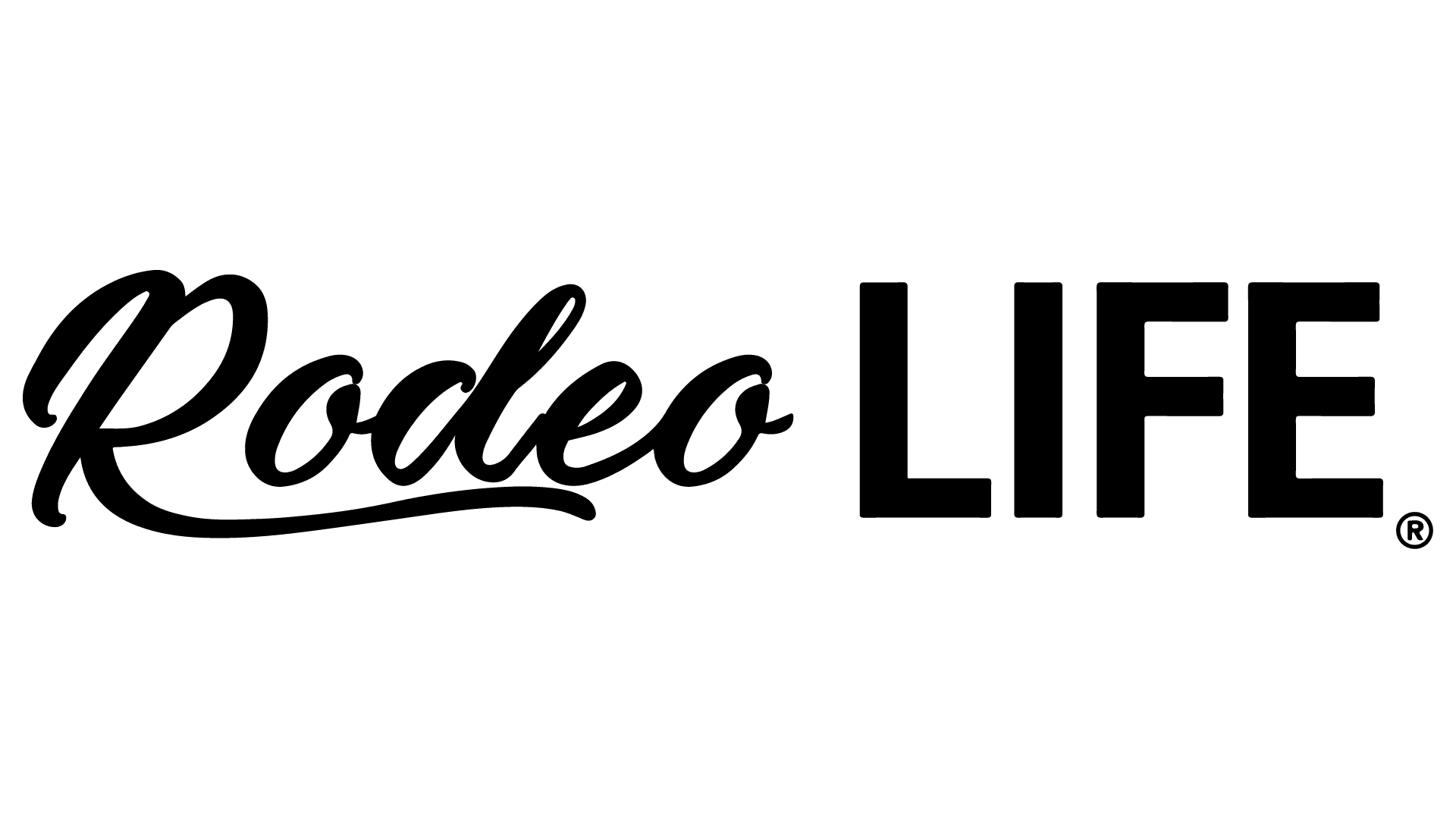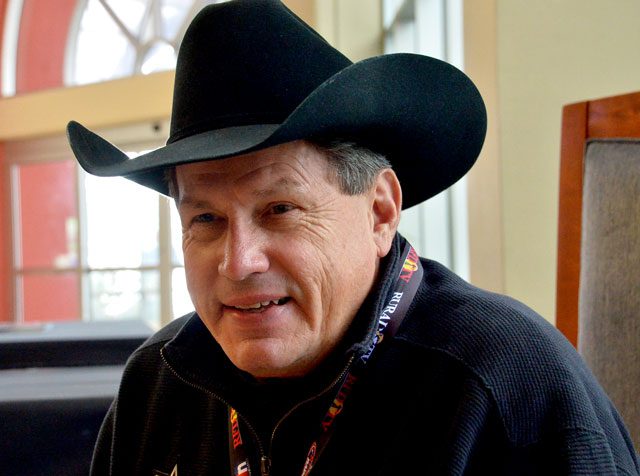Corporate Partnership
It’s not just about putting your hand out.
Corporate sponsorship is a two-way street; the sponsor and the sponsored both have goals. We’re here to help you meet those goals.
Dave Jordan is the corporate partnership coordinator for several organizations, including two NASCAR teams, horse organizations and the WPRA. He grew up in Colorado Springs, and spent five years with Randy Bernard and the PBR. When Randy left the PBR, Dave moved on to the PRCA, and ended up starting his own consulting business.
Steve Gander has years of experience in rodeo production and marketing. He wrote a column for Rodeo News called the Business of B.I.T.S. (Butts in the seats)
We will deliver a column once a month combining these two expert opinions and welcome your input.
Our goal is to teach you how to compete for Corporate Partnership dollars and how to put together strategic marketing plans for events and associations. We’ll address things from marketing strategies to timelines, and to how to effectively locate partnerships and close the deal.
His first word of advice? Don’t get caught up in excessive pride about an event. Be realistic. Would you rather have 10 sponsors at $500 a piece, or none at $5,000? It all goes in the bank, plus you have the opportunity to upsell them the following year if you do a great job with your clients. Businesses are inundated with those who use the hand-out approach without delivering anything in return … even on a local level. When presenting a partnership, remember that partnerships of varying “levels” (gold, silver, bronze, etc.) went out in the 1990s. The days of slapping up an arena banner and doing a PA announcement and expecting thousands of dollars are gone. Potential Corporate Partners expect you to create a package that best helps them leverage their brand and accomplish their Corporate goals and objectives.
The best approach is a PowerPoint, ending with a summary slide to showcase what you have to offer. Allow the company to put together a package that works best for them.
The best partnership options out there are local businesses. To present to them, email the PowerPoint to the business (it has to get to the right person) and follow that up with a phone call to set up a meeting. On the national level, you have to have a connection within the company to get someone to pay attention to you – that’s the only way they are going to do it.
If you plan to hire someone to help, you need to be prepared to give them a stipend each month to cover their time. A minimum of $500 to $1,000 a month plus 15 percent is what is required to shop your event out.
First Things First
Before you even begin strategizing, building a PowerPoint presentation is critical. The days of sending out sheets of paper went out in the 90s. I am amazed at how many people still use that method. Take that information and put it into a PowerPoint that tells your story.
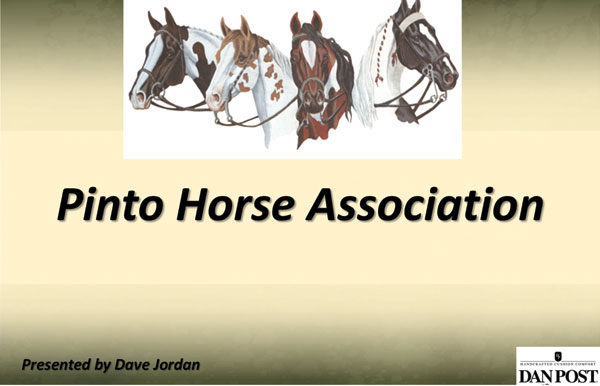
It has to be fresh. Come up with a slide background that pops – avoid plain white, black, or red. Remember: You have three to five minutes to capture your prospect’s attention.
The cover slide should simply be the name of your event across the top of the screen, a logo underneath, and the words “Corporate Partnership Opportunities” at the bottom. Add a “Presented to” line, and type in the name of the company you are sending it to.
In the very bottom left, list the name of the presenter (likely you), and in the opposite corner, place the logo of the organization or event to whom you are presenting.
Second slide: If you have the resources to add a 30-45 second action clip from your rodeo, great. If not, this is an “About Us” slide, giving a history of the rodeo. A short paragraph here is perfect.
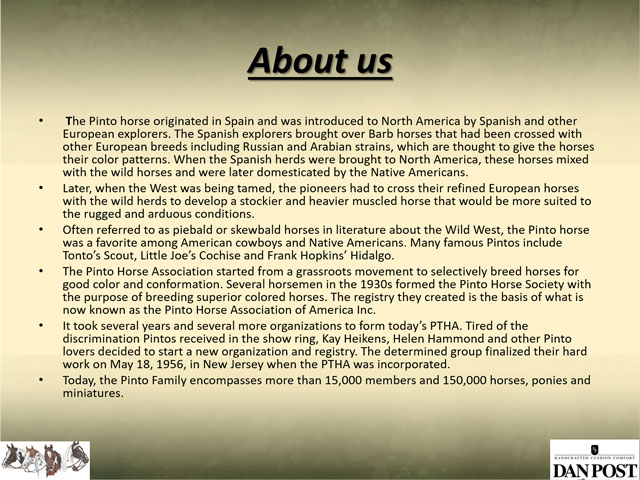
The third slide is about the demographics – the real teeth of your presentation. Scarborough Multi-Market is a demographics leader, and a valuable resource. You can also send out questionnaires to members and have someone floating through the stands with a clipboard to begin collecting the kinds of statistics you need.
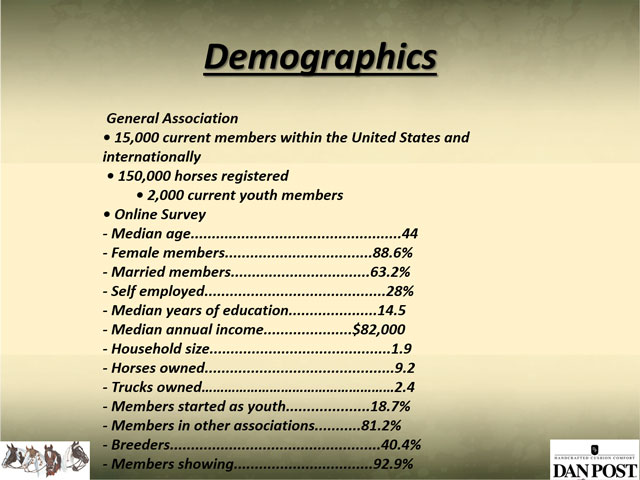
The fourth slide is the place to go into signage. This is where you have photo examples of the chutes, arena and out-gates to give a visual presentation of the opportunities available. You want to have enough room to cut and paste your prospect’s logo onto the images – break this into two slides for clarification if you need to. It’s imperative to use a clear photo and make sure you can get their logo in.
The fifth slide should be printed program opportunities. This is an area that is often lacking. Many rodeo programs are simply an avenue to place sponsor ads, and contain no editorial information of value. Here is where you can share the history of your rodeo, information about the contestants, photos from past rodeos, information about additional events, schedules, and other items of interest. This information will make your rodeo program much more readable, collectible and valuable. We’ll talk about this again in a later article.
The sixth slide should explain VIP seating and hospitality. If you don’t offer this, you should. Here, you would put a photo of the designated VIP area, saying, “Special area for you and your valued clients and dealers.”
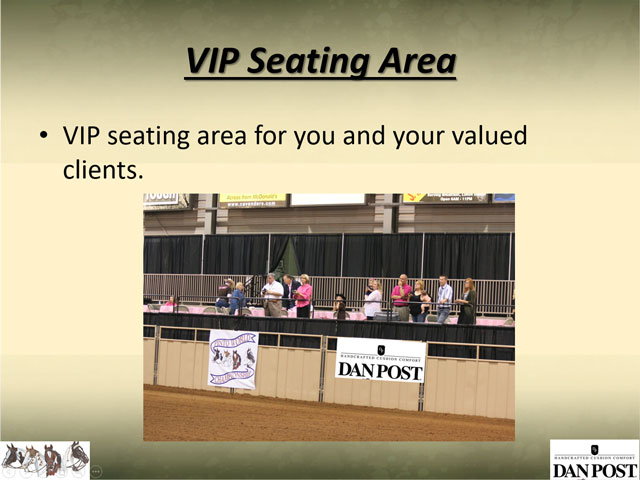
We will cover the summary slide in the next issue, but for now, the value of the PowerPoint cannot be underestimated. Keep it short and to the point, with great images, to define the opportunities at your event.
